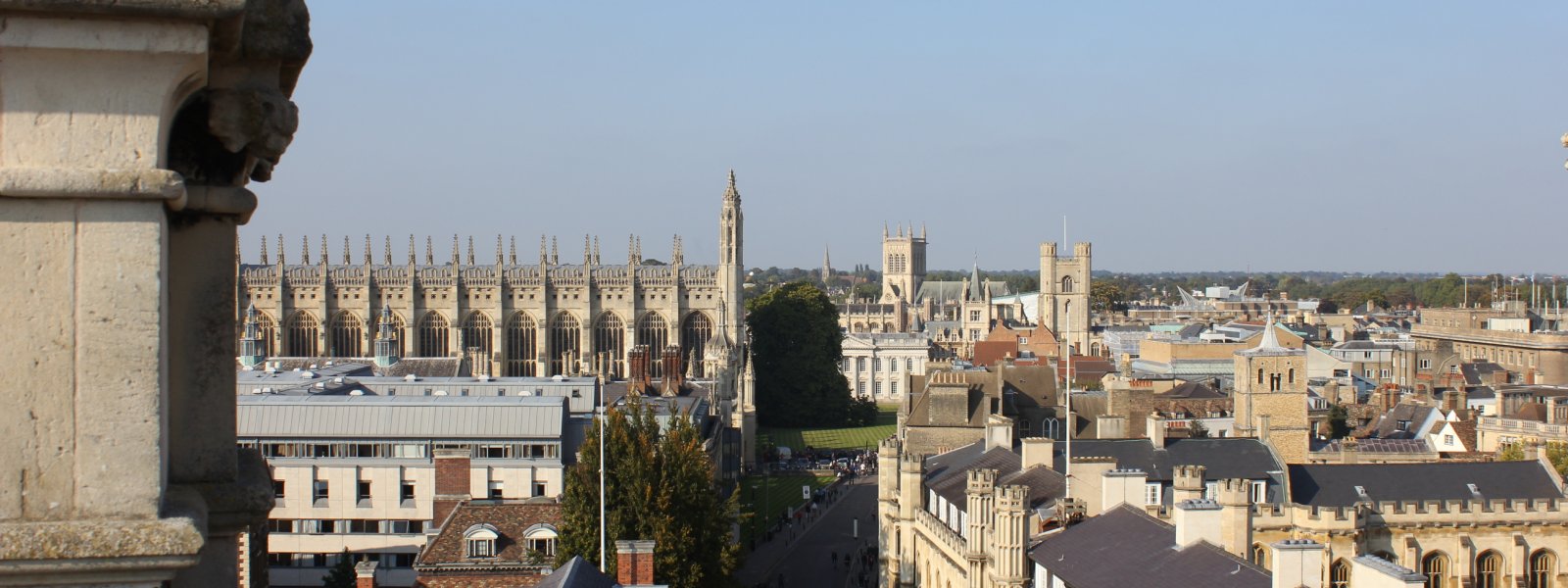There's something for everyone in Cambridge! Explore this page to discover interesting things to see and do in and around the city.
- Things to see and do in Cambridge
-
- Cambridge American Military Cemetery - the only American World War Two cemetery in the United Kingdom.
- Cambridge University Botanic Gardens holds a collection of over 8,000 plant species from all over the world to facilitate teaching and research.
- City Sightseeing Bus allows you to hop on and off an open top bus to explore the city as you please!
- Fitzbillies has been a part of Cambridge since 1920 and is still serving its famous, traditional Chelsea buns!
- Grasshopper clock can be found on the corner of Corpus Christi Taylor Library.
- Great St Mary’s clock tower provides some of the best views in Cambridge...see if you can manage the 123 steps!
- Kings College Chapel is one of the most iconic and recognisable structures in Cambridge.
- The Orchard, Grantchester is the perfect spot to enjoy a cup of tea.
- Punting along the world famous Cambridge College ‘Backs’ is one of the pleasures of a visit to Cambridge.
- The Round Church is Cambridge's second oldest building and a great place to begin exploring the city.
- Day trips
-
- Anglesey Abbey & Lode Mill belongs to the National Trust, here you can visit a Jacobean-style house with gardens and a working watermill.
- Ely Cathedral attracts lovers of architecture from all over.
- Imperial War Museum, Duxford allows visitors to walk through the same hangars and buildings as those who served at RAF Duxford.
- Newmarket Races & Stud is a great day out, whether it's a day at the races or an evening watching live music.
- Oliver Cromwell’s House allows you to wander around the former Sidney student and Lord Protector's family house.
- Wimpole Hall belongs to the National Trust, here you can visit working estate still guided by the seasons, with an impressive mansion, parkland, gardens and Home Farm.
- Wicken Fen Nature Reserve offers a glimpse into the ancient fenland landscape of East Anglian lowlands.
- Guided walks
-
- Christian Heritage has been running our highly acclaimed Round Church guided walks of Cambridge for nearly 20 years.
- Visit Cambridge run guided walking tours across the city.
- Museums, galleries, and exhibitions
-
- The Museum of Cambridge contains collections represent Cambridge and Cambridgeshire history and heritage over 300 years, including objects related to everyday life, customs and traditions of local people, places and events.
- Fitzwilliam Museum was founded in 1816 by the 7th Viscount Fitzwilliam of Merrion who bequeathed his vast collections of art, music and books to the University of Cambridge. Kettle's Yard is the University of Cambridge’s modern and contemporary art gallery.
- Museum of Archaeology and Anthropology at the University of Cambridge displays world-class collections of art and artefacts from all over the world.
- Museum of Classical Archaeology ranges from the largest of sculptures to the smallest of artefacts.
- Museum of Technology shows the progression of power technology through steam, internal combustion, to electricity.
- Museum of Zoology displays of internationally important specimens, including fossils, mammal skeletons, birds, and shells.
- Scott Polar Research Institute is part of the Scott Polar Research Institute, established in 1920 as part of the University of Cambridge, which is a centre of excellence in the study of the Arctic and Antarctic.
- The Sedgwick Museum of Earth Sciences is the oldest of the University of Cambridge museums, having been established in 1728 as the Woodwardian Museum. Since then the collection has grown from about 10,000 fossils, minerals and rocks, to at least 2 million.
- Whipple Museum of the History of Science includes scientific instruments, apparatus, models, pictures, prints, photographs, books and other material related to the history of science.
